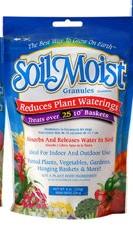
image from The Nourished Kitchen. The Internet is an amazing place...
Molasses is used as a “carbohydrate booster” in hydroponics, and dry molasses is sold as a “nutrient-rich soil booster” at one of my local feed stores*. It's more desirable than simple sugars for use in gardening because of its relatively high concentration of minerals, and particularly because of its mineral-chelation effect—skipping the science, that means molasses can provide micronutrients to plants with no danger of toxic overload of those nutrients, and dramatically improve plants' ability to use other nutrients already present, thus lowering the need for fertilizers.
Yikes. I've been spending too much time around eggheads lately. -G- Where was I? Molasses, alternatives to, right.
Don't get me wrong, I love molasses. In the kitchen and the garden both (ginger snaps and AEM/AIM come immediately to mind). But judging by the number of plaintive queries I've seen, non-US gardeners, especially, may not be able to find molasses. And, too, I'm fundamentally opposed to buying anything when I have something already that will do as well, so...I started playing.
Refined sugar? No!
When growing microbes, refined sugar promotes different populations than the more complex molasses; seeing as EM was designed around molasses, I wanted something similar.
Honey? Nope.
Honey, if not contaminated, will not spoil. Anti-biotic, anti-microbial, not at all what EM needs.
Maple syrup? Way too expensive to use for this, so I didn't even try.
Stevia? Aspartame? Xylitol? No, no, no.
Stevia is a sweetener, but not a sugar. Artificial whatevers I'll leave in the lab, not my garden. Xylitol, and sugar alcohols generally, seem to be harder for microbes to process than the ultra-refined simple sugars, but not complex enough to sustain sufficient microbe-generations for my needs. (Nor for kombucha, according to a site I cannot now find to link. Ah, well.)
Molasses is a waste product derived, generally, from processing sugar cane. The cane is harvested and stripped of leaves, then pressed/smashed for juice. That juice is boiled and processed to extract sugars; molasses is what's left over after the sugar production. Different grades and categories of molasses indicate the processing methods undergone. Blackstrap molasses, which is what I use, has the best nutritional profile for humans and animals; my microbes and plants seem to like it, too.
Jaggery? Palm sugar? Piloncillo? Yes.
Jaggery, as I know the term, can mean the solid sugar cane remnants after the crushing, or a sugar made by evaporating the juice of date palm sap, or any unrefined, largely unprocessed sugar. Piloncillo is more a reference to the cone-shape than the make-up, which is simply unrefined sugar, typically made of evaporated cane juice. So, yeah, any of the above makes a decent substitute for molasses in AIM. Their nutritional profiles may not be the same, but they're all complex enough to grow vigorous effective-microbe colonies. Still too early to see how well it compares to blackstrap molasses in the garden, but so far, no difference has been observed.
Sorghum molasses?
I find it hard to imagine an area that has sorghum molasses but no blackstrap. Perhaps a household, though, so I looked it up. Turns out, this is more properly labeled a “syrup,” lower nutrient concentrations than real molasses, perhaps not quite so refined as table sugar. I wouldn't use it in my AIM, but I'd be curious as to other folks' results.
And a bonus item:
Dried molasses? Sadly, not for AEM/AIM. Turns out, the stuff at the feed store is actually molasses sprayed on “grain waste.” So, maybe for EM/IMO bokashi bran!
Until the next ferment,
DSF
*Yes, Austin really is in Texas. Sometimes that's hard to remember. Then you realize that you live within easy riding distance of three different feed stores, two of which are chains.



.bmp)






